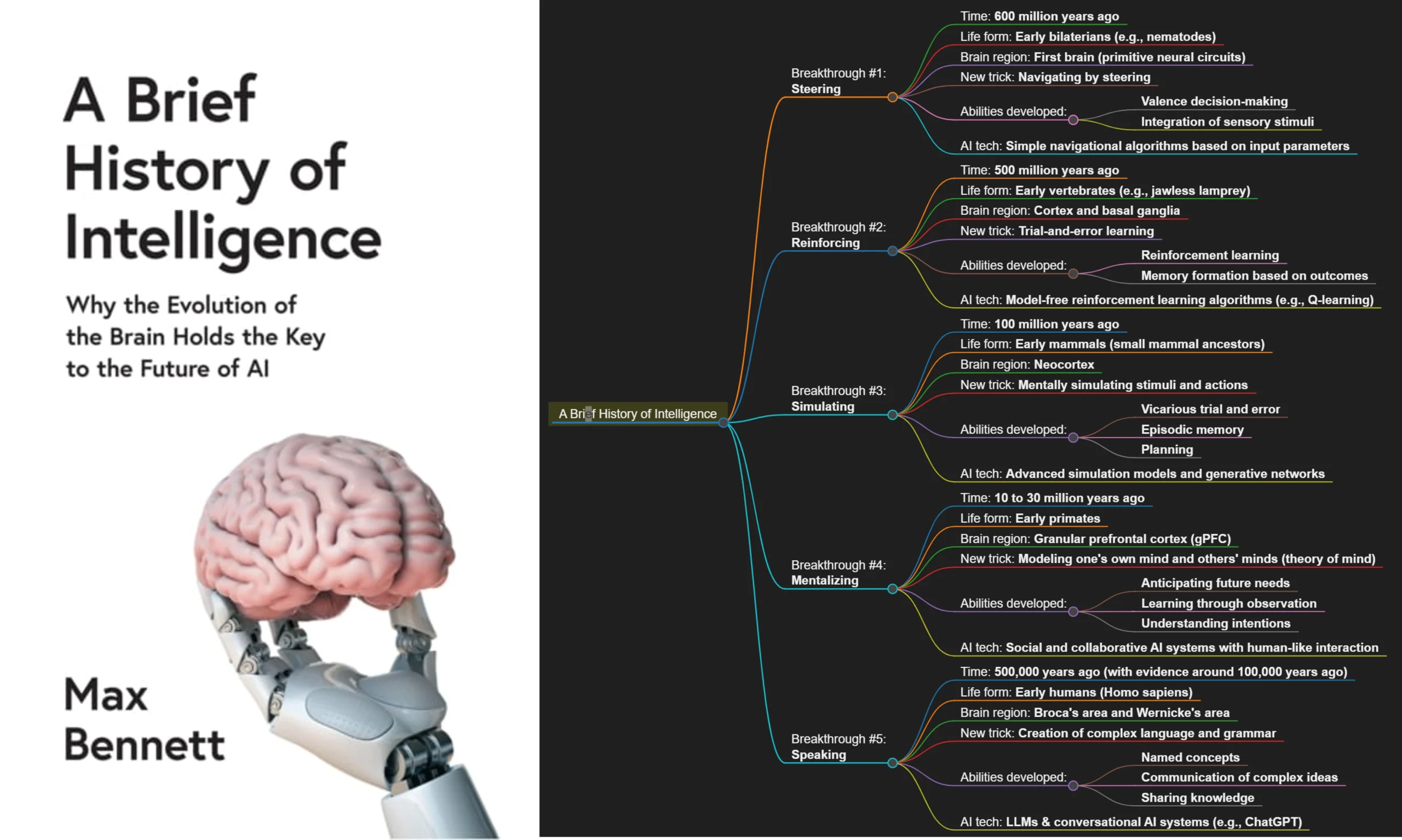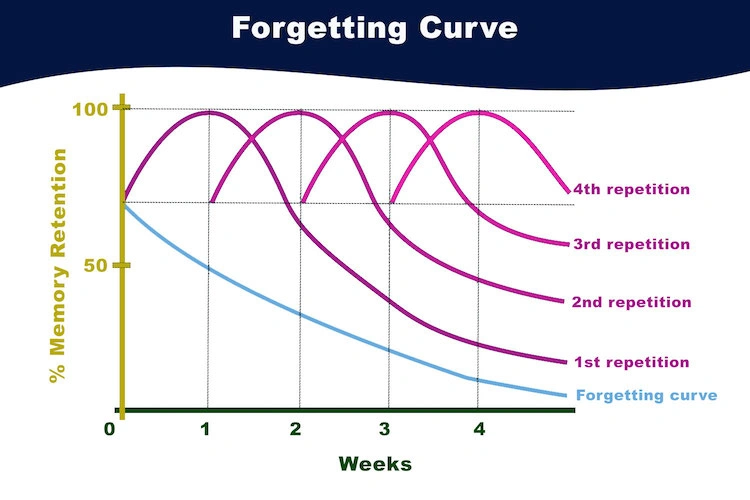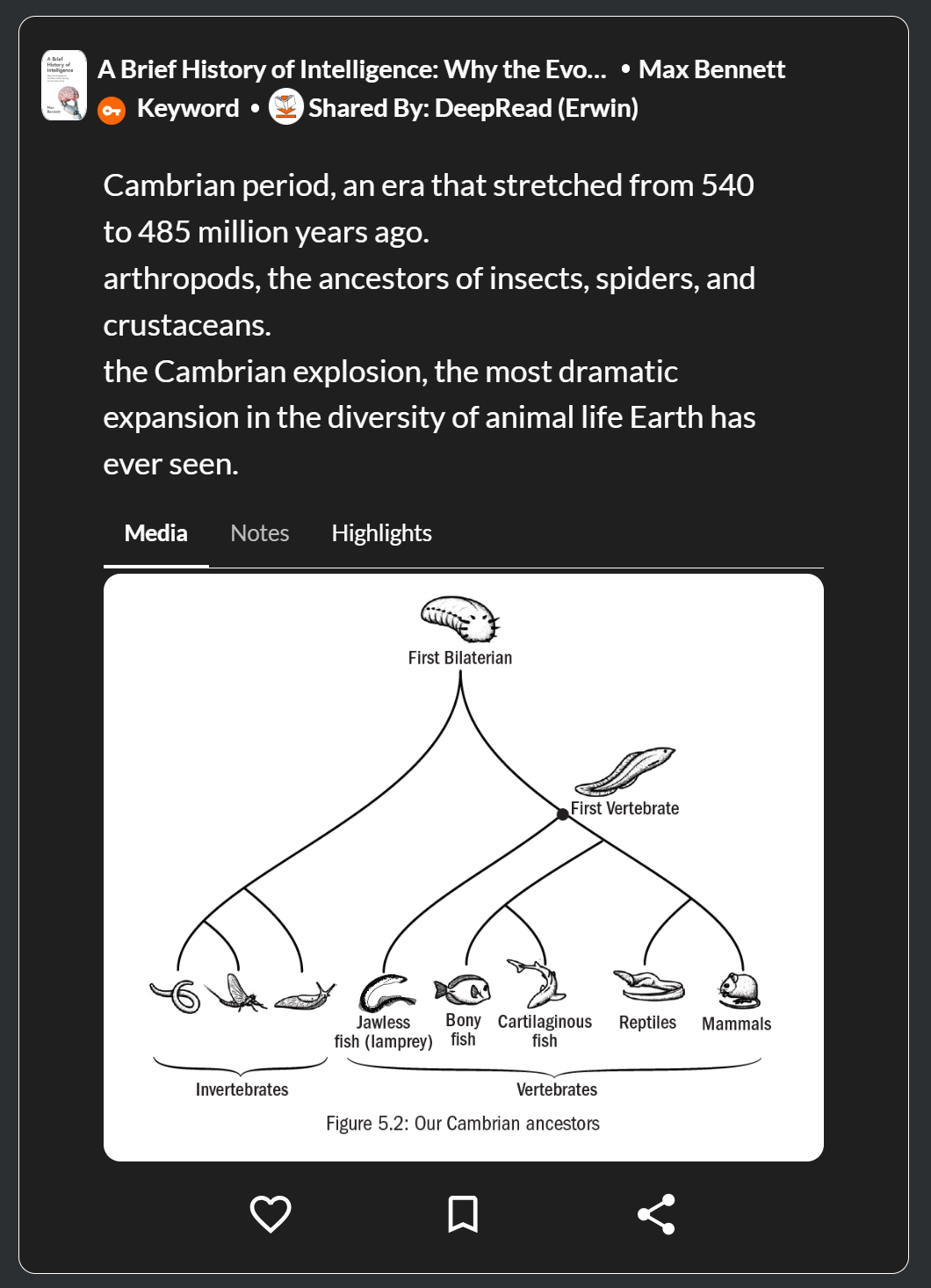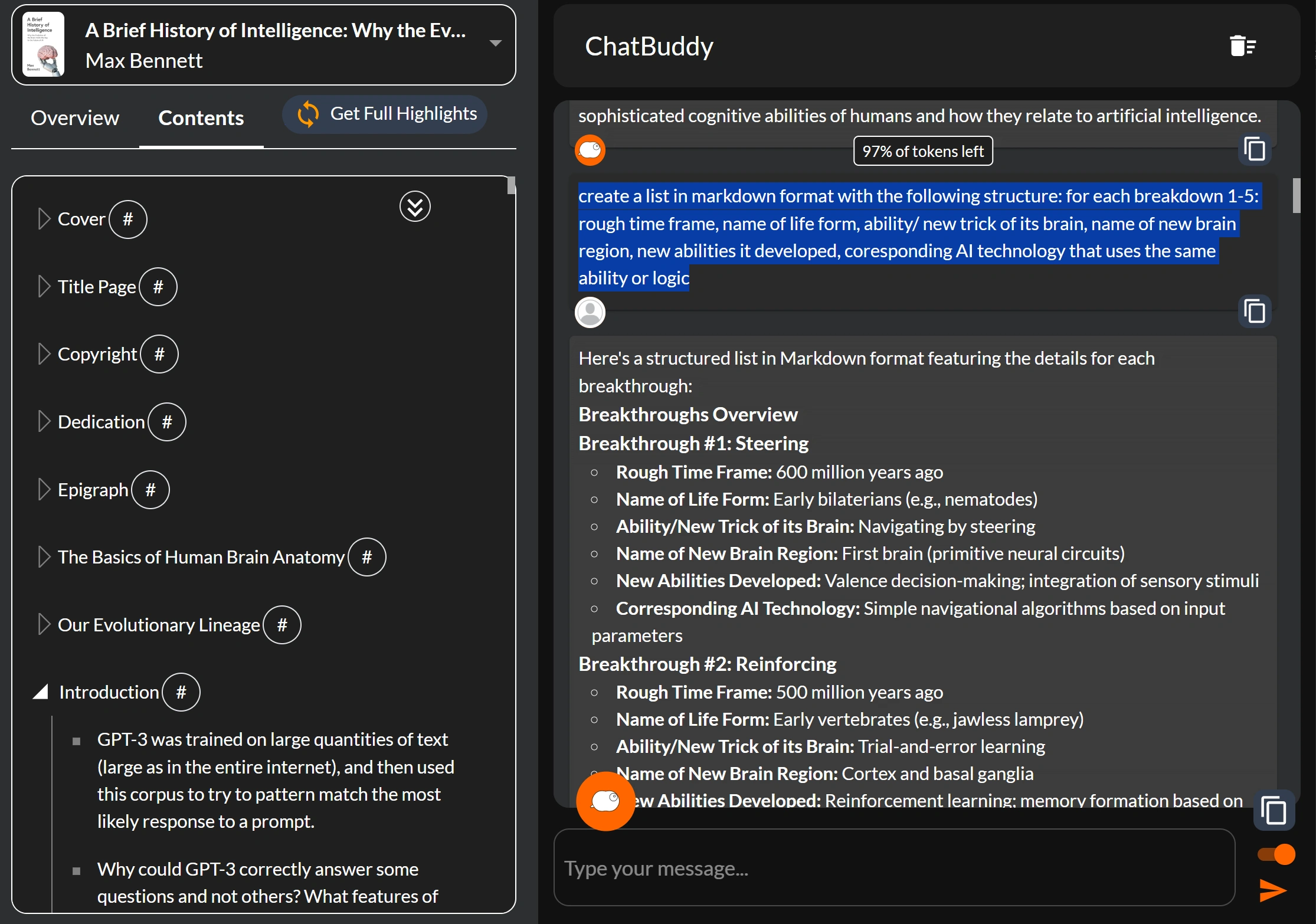There are two ways to highlight a book. The first is quick and selective: you mark only what catches your attention—surprising insights, beautiful quotes, things that touch you personally. This approach is light, intuitive, and doesn't slow you down much.
The second approach is comprehensive and systematic: you highlight all key passages so that someone reading only your highlights could understand the book's complete storyline and argument. This means capturing essential definitions, main claims, supporting evidence, and the logical flow that connects them. It's deliberate work. It slows you down. You have to think carefully about what's truly necessary versus what's merely interesting.
So why would anyone choose the harder path?
I discovered the answer accidentally during my university years. The night before an exam, I had to review a 250-page book I'd read weeks earlier. I'd highlighted systematically throughout—every key argument, every essential concept, every piece of evidence that mattered. That night, instead of rereading the entire book, I read only my highlights.
It took me two hours to go through the complete highlights of a 250-page book. And I had the distinct feeling of having reread the entire book—not skimmed it, but genuinely engaged with the full argument again. The systematic highlighting had created a compressed version that preserved the book's complete reasoning.
That experience taught me something valuable, but it was still limited. I could review faster, but I couldn't do much else with those highlights. They sat there, static, waiting for me to reread them.
Then AI changed everything.
Now when you ask a general AI like ChatGPT about a book, it often knows the content. It can discuss themes, summarize chapters, explain concepts. But here's what it can't do: The AI can't know which specific insights you found crucial, which formulations you found inspiring, which arguments confused you, or which examples connected best with. It has generic knowledge of the book, but not your understanding of it.
When you give an AI your systematic highlights—the complete set of passages you carefully selected—you're giving it your map of the book's argument. Now it can engage with what matters to you. It can help you build on your insights, clarify your confusions, and create artifacts that make the book's knowledge genuinely yours.
In my previous article, I called this systematic approach the Composer strategy—highlighting to compose a complete reconstruction of the book's argument. The Composer strategy takes real effort. But that effort creates something valuable: the foundation for four powerful ways to engage with what you've read.
Each of these workflows does something a passive reading experience can't: it creates a tangible artifact. Not just insights you think about and forget. Not just interesting conversations that disappear. Actual outputs you can return to, refine, and build upon.
When you've highlighted systematically, you have all the pieces needed to rebuild the book's complete structure. An AI can help you arrange these pieces into a mind map—a single-page visual that captures the entire argument, showing how chapters connect, how sub-arguments support main claims, and where key concepts appear throughout the book.
I did this with Max Bennett's "A Brief History of Intelligence." The book is dense with facts about evolutionary history and early life forms—timelines of when different capabilities emerged, evidence from various species, competing theories about intelligence development. I wanted to preserve this knowledge, but more importantly, I wanted to see how it all connected.

Because I'd highlighted systematically—capturing every major claim, every significant piece of evidence, every transition in the argument—I could work with an AI to build a comprehensive mind map. The AI had my complete set of highlights in its context, so it could identify the hierarchical structure: the main evolutionary stages, the evidence for each stage, the implications for understanding intelligence. The result was a single-page overview I still reference regularly.
You can read the detailed process of how I created this mind map in my article on creating mind maps from your reading. For a deeper understanding of the summarization technique that makes this possible, see my article on nested summarization.
The key is that you're not just asking an AI to summarize a book it vaguely knows. You're collaborating with it to organize your highlights—the specific passages you identified as essential—into a structure that serves your understanding.
Artifact: A mind map or summary document that captures the book's complete argument on one page.
Sometimes you finish a book with questions. A concept wasn't clear. An argument seemed to contradict something from earlier. The author made a claim you want to examine more closely. With systematic highlights, you can have an AI help you explore these uncertainties.
Because the AI has your complete set of highlights, it can find the relevant passages when you ask about a specific concept. It can explain the author's reasoning using the exact text you highlighted. It can identify where the author addressed your question in a section you might have forgotten.
But you can go further than clarification. You can engage critically: ask the AI to steelman the author's arguments—to present them in their strongest, most defensible form—or to identify potential weaknesses you might have missed. You can role-play a conversation with the author, having the AI respond from their perspective based on the complete reasoning you captured in your highlights.
This is where systematic highlighting shows its value. When the AI only has generic knowledge of a book, it might miss the nuances you found important or the specific way the author developed an idea. But when it has your highlights, it can engage with the actual argument you read, not just a general summary.
Artifact: Notes or idea cards capturing new understandings, clarifications, or critical insights.
Reading doesn't equal retention. You can finish a book feeling like you understood everything, then struggle to explain it a week later. Testing yourself is how you discover what you actually retained versus what you only thought you understood.
With systematic highlights, you can have an AI generate flashcards that test genuine comprehension. Not trivial recall questions like "What year was this published?" but questions that require you to understand relationships, apply concepts, or explain the reasoning behind claims.
The AI can pull from your highlights to create questions like: "How does the author's concept of X relate to their earlier argument about Y?" or "What evidence does the author use to support their main claim, and why is this evidence significant?" These questions test whether you've internalized the book's structure and reasoning.

Once you have these flashcards, you can integrate them into a spaced repetition system—reviewing them at increasing intervals to move knowledge from short-term recognition to long-term retention. I've written more about this approach in my article on using spaced repetition with your reading.
Artifact: Flashcards with meaningful questions and answers for spaced repetition practice.
The most valuable moments in reading are when you see something clearly for the first time. An insight clicks. A concept suddenly makes sense in a way it didn't before. A connection appears between ideas the author kept separate.
These moments are worth preserving, but not as isolated highlights. You want to capture them with context: why this insight matters, how it connects to other ideas, what you might do with it. An AI can help you develop these insights into full notes—what I call idea cards in DeepRead.
Start by identifying the highlights related to an insight you want to preserve. Ask the AI to find all the passages where the author discusses a particular theme or develops a specific concept. Then work with the AI to articulate the insight clearly, add your own observations, identify related ideas from other books, and even suggest visual metaphors or images that might help you remember it later.
Visual elements aren't decoration—they're memory aids. As I discuss in my article on visual learning, adding an image that represents an idea helps trigger recall when you review your notes later. The AI can suggest relevant images or visual metaphors based on the insight you're capturing.

You can also use the AI to extract actionable frameworks from the book's concepts. Instead of just noting an idea, you develop it into steps you can implement, questions you can ask yourself, or a decision-making framework you can apply to specific situations.
And here's where it gets interesting: you can start linking these idea cards together. When you capture insights from multiple books, you begin to see patterns and connections—similar to how a Zettelkasten note-taking system creates a web of interconnected ideas. Your highlights become the raw material for a growing knowledge base that compounds over time.
Artifact: Idea cards with annotations, visual aids, and connections to related insights.
The essential principle across all four workflows is this: every AI conversation about a book should end with a tangible artifact. Not just insights you think about and move on from. Not just interesting exchanges that live only in chat history. Actual outputs—mind maps, flashcards, notes, idea cards—that you can return to, refine, and build upon.
This is what transforms AI from a tool for having interesting conversations into a tool for building lasting knowledge. I've explored this concept more deeply in my article on creating externalized knowledge outputs from your reading.
But here's the practical challenge: systematic highlighting takes real effort. When you're reading a book you want to truly master, you need to capture complete arguments, essential evidence, logical connections. This means more highlights than you might instinctively take.
And yes, you'll eventually hit Amazon's generous highlight limits. When you do, here's a practical workaround: highlight the most important parts of a chapter, sync those highlights to DeepRead, then go back to the Kindle book and delete your highlights before moving to the next chapter. This way you can systematically highlight an entire book without hitting the limits. It's a bit of extra work, but it's worth it when you're engaging with a book that truly matters.
Right now, if you've already highlighted a book systematically and synced it to DeepRead, you can start using these workflows immediately. Go to the book in DeepRead, open the book chat feature, and the AI will have all your highlights in its context window. You can then instruct it to help you with any of the four workflows we've discussed.

The catch is that you need to manually guide the AI through each workflow. You have to tell it exactly what you want: "Help me build a mind map," "Generate flashcards that test comprehension," "Find all highlights related to this theme and help me create an idea card." The AI has your highlights and can help you, but you're responsible for structuring the workflow and capturing the artifact.
This is where it gets exciting. We're exploring how to build these workflows directly into DeepRead—not as manual processes you guide yourself, but as structured experiences with prefabricated steps. Imagine choosing a workflow and having the AI automatically guide you through it, creating artifacts in parallel as you work. Imagine having access to your entire Kindle library's highlights, with an AI that can navigate across books to find connections and patterns.
The technical foundation for this comes from combining Claude Code with filesystem access—an approach that gives AI persistent memory and state across conversations. Instead of starting fresh every time, the AI can accumulate knowledge about your reading, your highlights, your artifacts.
We're at the beginning of building this. Which means if you're interested in these workflows—if you want to engage more deeply with what you read, create lasting artifacts from your reading, and help shape how these tools develop—we'd love to hear from you.
Reach out to me at [email protected] and tell me which workflows interest you most. We're looking for a small group of engaged readers to develop these features together. Your feedback, your use cases, your experience with highlighting and engaging with books—all of this will shape how we build these workflows into DeepRead.
The effort of systematic highlighting is real. But so is the payoff: the ability to engage deeply with books, to create lasting knowledge, and to transform reading from a passive experience into active knowledge building. That's worth the investment.